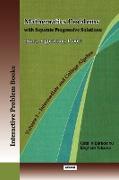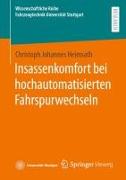- Start
- MATHEMATICS PROBLEMS WITH SEPARATE PROGRESSIVE SOLUTIONS
MATHEMATICS PROBLEMS WITH SEPARATE PROGRESSIVE SOLUTIONS
Angebote / Angebote:
The problem-solving assumes theoretical and analytical skills, as well as algorithmic skills, coupled with a basic mathematical intuition. The concept of this problem book successfully supports the development of these skills of the solver and meanwhile offers mathematics instructors models for teaching problem-solving as an integral part of the mathematics learning process. The topics of the problems belong to algebra II and algebra of the first two years of college, passing through fields of integer and real numbers, equations, inequalities, powers, logarithms, divisibility, polynomials, and combinatorics. This work is the first of a series that will also operate in other domains and subdomains of mathematics. The problem book is structured in four separate and independent sections, namely Problems, Hints, Algorithms, and Proofs, in this order. The Problems section consists of over 100 problems themselves, which are of medium to advanced difficulty level. The problems can be presented and discussed at mathematics workshops and sessions of preparation for contests and olympiads as well as in the classroom, using problems of different difficulty levels with separate groups of students, for advanced groups, an instructor can use this problem book in its entirety. The Hints offer groups of keywords that suggest to the solver - intuitively, as well as analytically - an initial approach to the problem, important observations upon which the solution is based, categories of theoretical results applied when solving, and specific theoretical results. The hints also suggest indirectly the solving algorithm (found in the next section), but without exposing or synthesizing it. In the Algorithms section, the solving algorithms provide chronological groups of steps necessary for generating the complete solution. The algorithm is presented as a brief list of tasks, it does not reveal the complete solution to the problem, but only points out the partial tasks whose results will finally yield the logical construction of the solution. The Proofs represent the complete integral solutions of the problems, unfolded according to the solving algorithm. This comprehensive presentation includes the detailed steps to be executed, the observations that precede the deductions, and the entire logical motivation. No partial results are left unproved, neither as an exercise nor as being obvious or easily deduced. The sections described previously are separated in this book so that the solver can explore the problem and search for solving paths independently, consulting the next section only when he or she has exhausted, with no success, his or her own approach and individual study methods. As the solver moves progressively from a partial solution to a more complete one, this additional effort itself becomes a useful mathematical exercise. Moreover, the process of moving successively through the indications of the problems together with individual investigation and autocorrection of a wrong approach, stimulates and motivates the solver toward a solution. All these elements give this type of problem book a truly interactive character.
Folgt in ca. 10 Arbeitstagen




